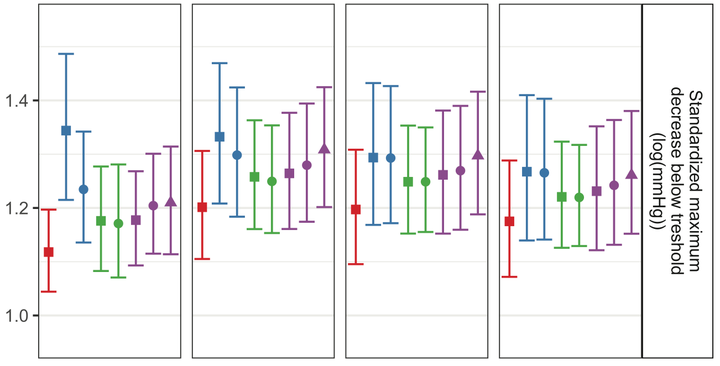Artifact processing methods influence on intraoperative hypotension quantification and outcome effect estimates

Abstract
Background: Physiologic data that is automatically collected during anesthesia is widely used for medical record keeping and clinical research. These data contain artifacts, which are not relevant in clinical care, but may influence research results. The aim of this study was to explore the effect of different methods of filtering and processing artifacts in anesthesiology data on study findings in order to demonstrate the importance of proper artifact filtering. Methods: The authors performed a systematic literature search to identify artifact filtering methods. Subsequently, these methods were applied to the data of anesthesia procedures with invasive blood pressure monitoring. Different hypotension measures were calculated (ie, presence, duration, maximum deviation below threshold, and area under threshold) across different definitions (ie, thresholds for mean arterial pressure of 50, 60, 65, 70 mmHg). These were then used to estimate the association with postoperative myocardial injury. Results: After screening 3,585 papers, the authors included 38 papers that reported artifact filtering methods. The authors applied eight of these methods to the data of 2,988 anesthesia procedures. The occurrence of hypotension (defined with a threshold of 50 mmHg) varied from 24% with a median filter of seven measurements to 55% without an artifact filtering method, and between 76 and 90% with a threshold of 65 mmHg. Standardized odds ratios for presence of hypotension ranged from 1.16 (95% CI, 1.07 to 1.26) to 1.24 (1.14 to 1.34) when hypotension was defined with a threshold of 50 mmHg. Similar variations in standardized odds ratios were found when applying methods to other hypotension measures and definitions. Conclusions: The method of artifact filtering can have substantial effects on estimates of hypotension prevalence. The effect on the association between intraoperative hypotension and postoperative myocardial injury was relatively small. Nevertheless, the authors recommend that researchers carefully consider artifacts handling and report the methodology used.